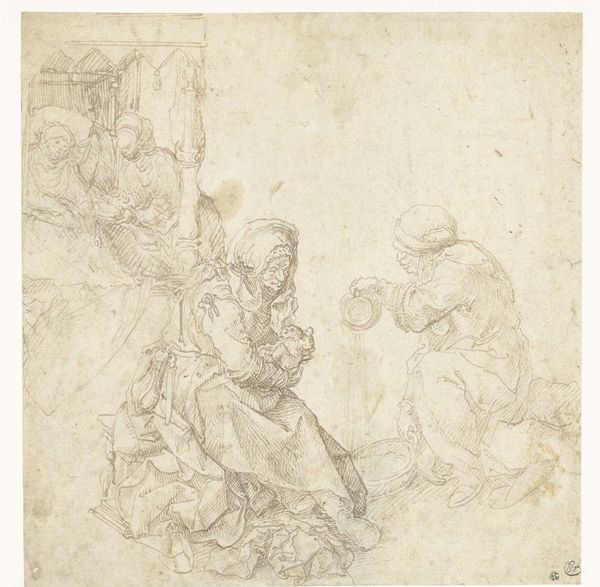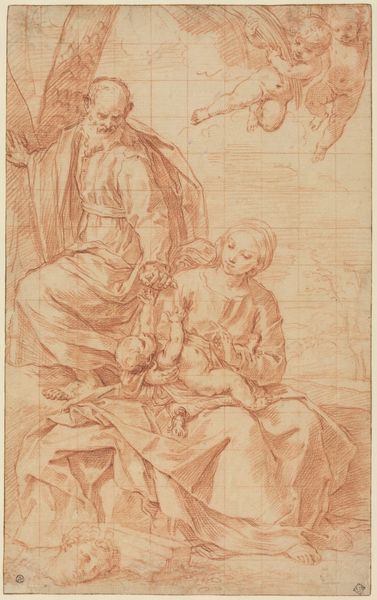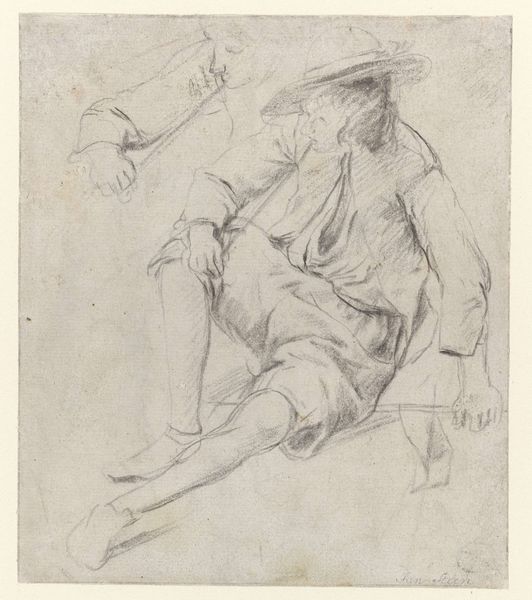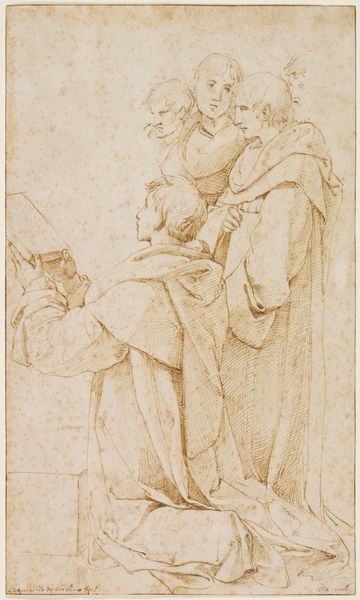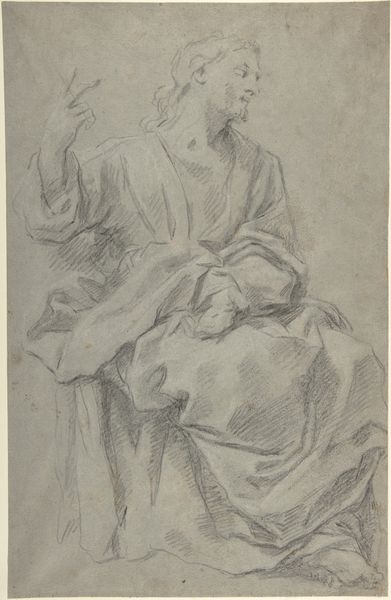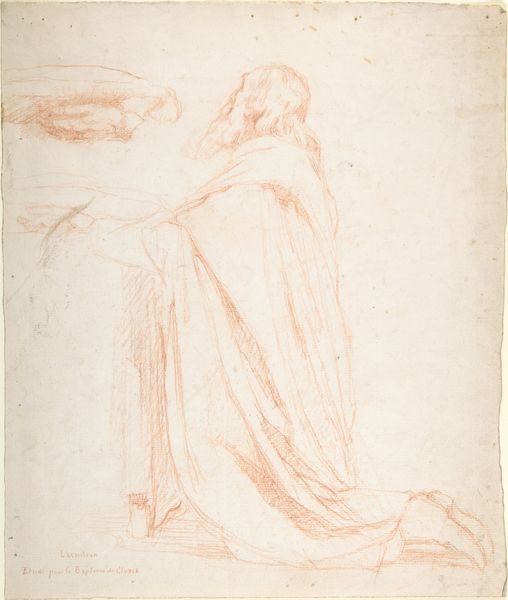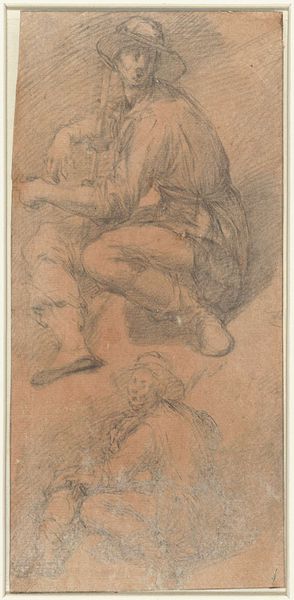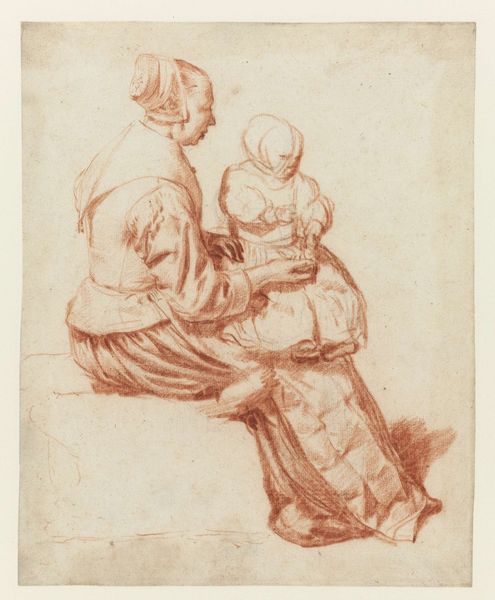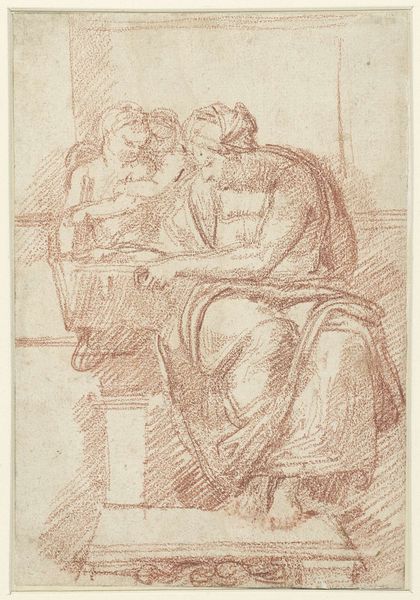
drawing, pencil
#
portrait
#
drawing
#
baroque
#
pencil sketch
#
figuration
#
pencil
Dimensions: height 256 mm, width 179 mm
Copyright: Rijks Museum: Open Domain
Editor: Here we have "Old Woman with Baby and Half-Figure of a Singing Woman" by Jan Josef Horemans II, created sometime between 1724 and 1790 using pencil. It's a surprisingly intimate drawing. What strikes you most about it? Curator: The immediacy of the pencil sketch highlights the labor involved in artistic creation. This isn’t a finished product, but a glimpse into Horemans's process, a negotiation with the material itself. The lines reveal the artist grappling with form, with volume. How does the rawness of the material connect with the chosen subject matter of the figures? Editor: I see what you mean about it not being a finished product. The rawness feels intentional. Do you think there's a message here about how we perceive or value "finished" art versus preparatory sketches? Curator: Exactly! It pushes us to consider value itself. A highly polished painting of the time may have been prized for its illusionism, but what about the immediate, tangible connection we have with the artist's hand in this drawing? Think of the social context - the materials were readily available. The accessibility of pencil challenges the hierarchical structures around art and labor that separated the elite painters from common artisans. It begs the question of production, artistic labor, and value. Do you feel the subject matter of common women elevates the sketch in your view, given that sketches often showcased aristocratic patrons? Editor: I do, especially given the implied narrative, with a working mother juxtaposed with what may be a higher class musician above. Now I feel I appreciate this rougher work of art. I didn’t consider the implications of its artistic process initially. Curator: Indeed. By engaging with its materiality, we uncover complex relationships between artist, subject, and audience within a specific historical framework.
Comments
No comments
Be the first to comment and join the conversation on the ultimate creative platform.
